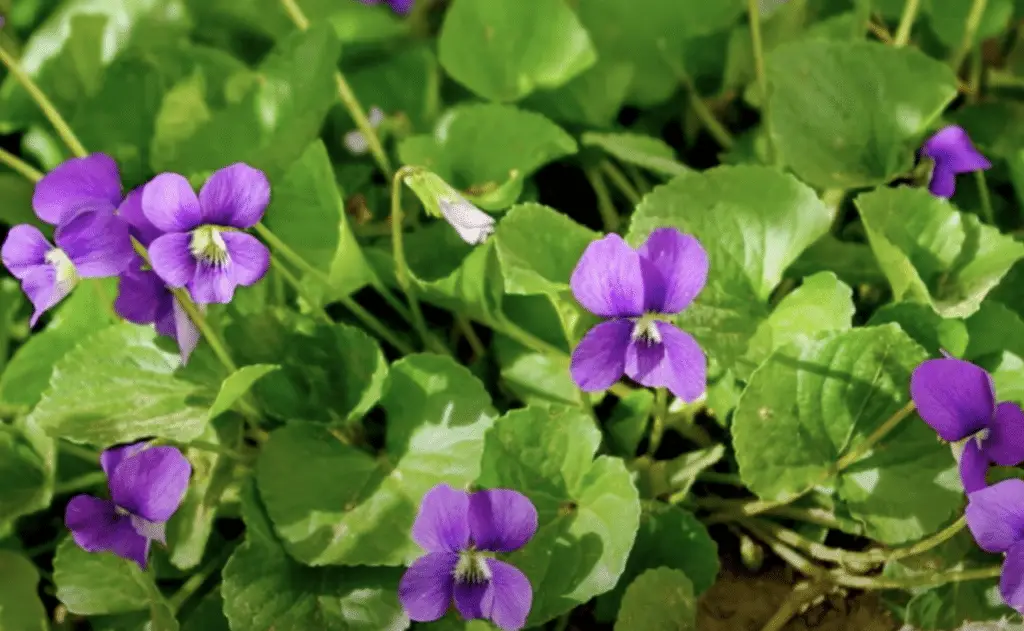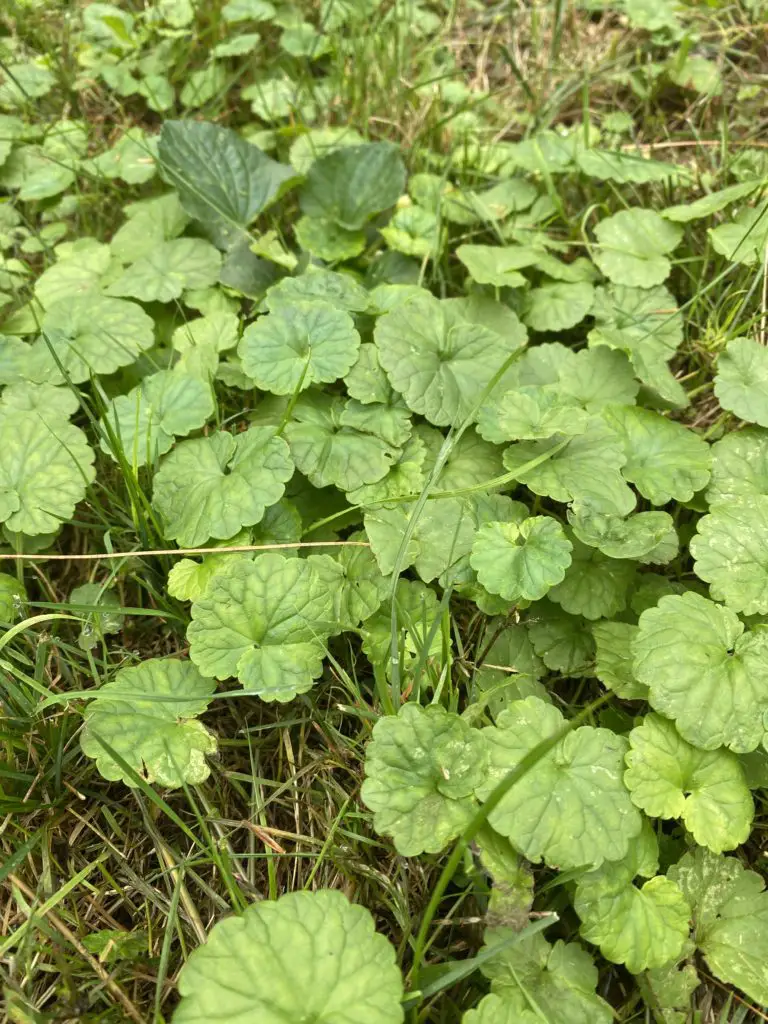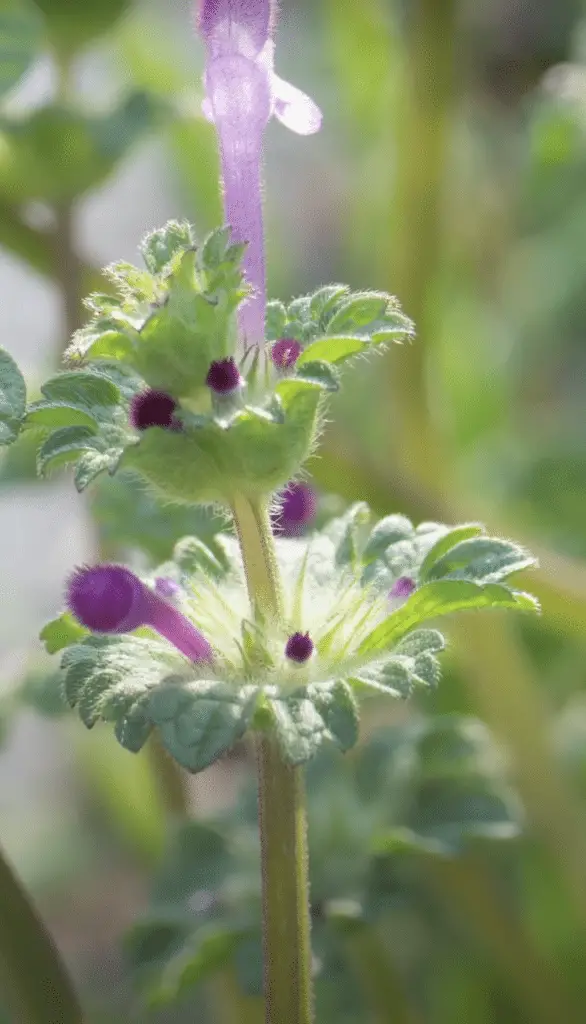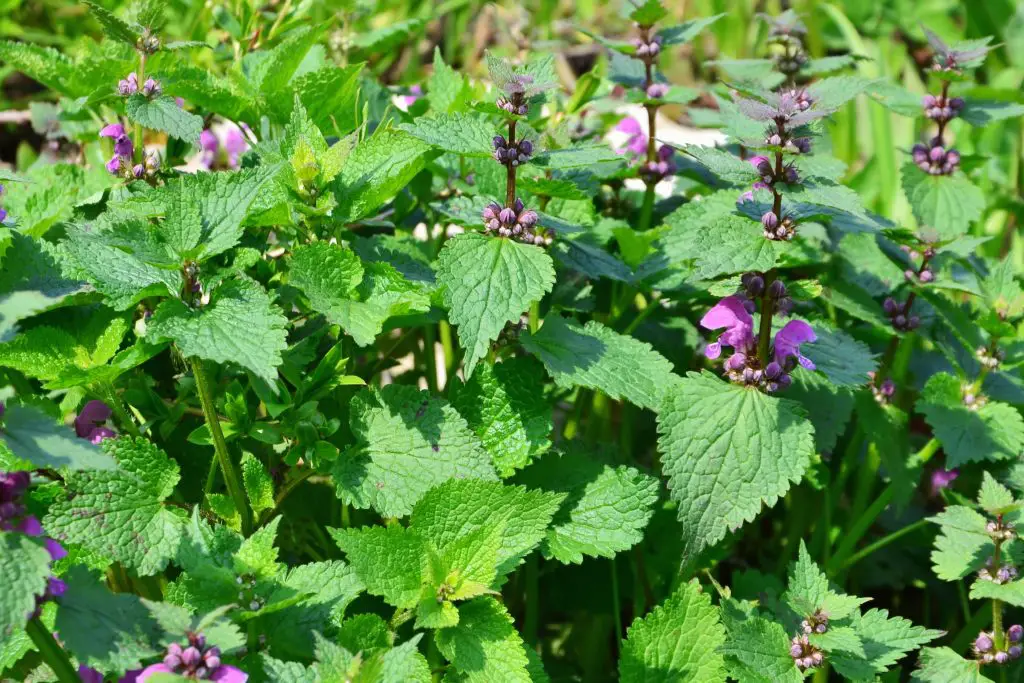LAWN PHIX PRO TIPS
After treating hundreds of residential and commercial properties, I can confidently say that these purple-flowered broadleaf weeds are the No. 1 nemesis. They’re a battle, but follow these tips to keep these weeds at bay in your lawn.
- For best results, spray these weeds in the early spring, two weeks apart, and again in the fall.
- Choose products with the active ingredient Triclopyr.
- Mix Triclopyr with other two-way herbicides containing 2,4-D acid, Dicamba, and a non-ionic surfactant.
- If possible, spray these weeds before they flower, as they tend to form a waxy coating, making them more challenging to eradicate.
- To limit the effect on pollinators, mow and bag the flowers 1-2 days before spraying.
Most weeds are tenacious, but there are some common weeds with purple flowers that are especially aggressive when they invade lawns or flower beds. It’s also true that a purple flower weed such as wild violet can be attractive, but the problem with weeds is that they compete, often successfully, with more desirable plants for water, nutrients, and even sunlight.
Consequently, preventing purple flower weeds like wild violets, creeping charlie, and purple deadnettle from popping up or overtaking your lawn and flower beds with their purple flowers is essential for maintaining your healthy landscape. Regardless of which undesirable weed it is, you need to tackle them before they flower and form a thicker waxy coating on the leaves. Commercially, I use OnDeck (Dicamba and 2,4-D) and spike it with Triclopyr and a non-ionic surfactant. But homeowners will have good results with T-Zone or EndRun.
Learn how to contend with purple flowering weeds and broadleaf weeds here.
Table of Contents
What are the weeds with purple flowers called?
There are various types of weeds with purple flowers, including musk thistle and Canada thistle. However, the most common purple-flowered weeds are the ones outlined here: wild violet, henbit, creeping charlie, and purple deadnettle. Other common weed types might feature white flowers (like white clover) or yellow flowers.
Wild Violet
Cheerful and sweet with their small purple blooms, delicate stems, and waxy green leaves, wild violets are pretty little plants, but beware; these perennial weeds can overtake your lawn. As far as lawn weeds go, wild violets are extremely aggressive, spreading via their rhizomes. Moreover, they have the ability to self-pollinate.
While some people enjoy allowing wild violets to grow on their property, others with more formally maintained lawns will want to prevent their growth. If you like the look of wild violets and their purple flowers, it’s better to plant their cousins–violas, and pansies–in your flower beds or flower boxes instead. These annuals have purple flowers but are not aggressive like weeds.
How to Get Rid of and Prevent Wild Violet
Broadleaf herbicides are the most effective method for eradicating wild violets and many other perennial weed types from your lawn or garden.
Some gardeners prefer hand pulling weeds, but this is a more labor-intensive method; especially when long stems and extensive weed roots are involved; plus, if any of the plant remains in the soil, its rhizomes could resprout, resulting in the wild violet return.
You can prevent wild violets and their purple flowers from invading your lawn by keeping it lush and healthy. Lawn weeds find it more difficult to invade a thick, healthy lawn. To keep common weeds like wild violets out of your flower beds, be sure to mulch them. The mulch makes it difficult for weeds to emerge.

Creeping Charlie
Creeping Charlie, also known as ground ivy or creeping jenny, is a member of the mint family and is a perennial weed with purple flowers. Creeping charlie like many broadleaf weeds poses a triple threat to lawns and gardens because it spreads via seeds, creeping stems, and rhizomes.
Creeping charlie like many weeds thrives in moist soil, especially near trees and shrubs. By late spring, creeping charlie produces small purple flowers.
How to Get Rid of and Prevent Creeping Charlie
Since creeping charlie has an extensive root system, hand pulling can be virtually impossible. Unless all parts are removed, this common lawn weed will most certainly back. Even though weeds with shallow roots are easy to pull up, these are all interconnected and all the plant material of existing plants has to be removed to prevent new growth.
Broadleaf herbicides with Triclopyr work the best. Spray it in the spring and fall to keep these weeds in check. Maintaining the health of your turfgrass is the best defense against lawn weeds like creeping charlie. If creeping charlie invades garden beds, you’ll want to avoid the use of a broadleaf weed killer and stick to pulling the weeds by hand or hoeing.

Henbit
Henbit is an annual weed that blooms in early spring. It features small purple flowers and green heart-shaped leaves. In addition to sprouting up uninvited on lawns, henbit may frequently be seen growing in fields, drainage ditches, or on roadsides.
Henbit’s seed production is immense–nearly 2,000 seeds per plant. Its seed heads disperse the seeds, ensuring the plant’s propagation. It’s best to eliminate these weeds before seed production takes place.
How to Get Rid of and Prevent Henbit
To get rid of henbit, among the most tenacious weeds, you can use a chemical herbicide or pre-emergent herbicide containing prodiamine. Hand pulling is most effective if you pull it when the plants are still young. To prevent henbit and its purple flowers from blooming, maintain a lush lawn. Good drainage is essential as henbit, like many weeds, prefers moist soil.

Purple Deadnettle
Another member of the mint family, purple deadnettle is a hardy weed that emerges in early spring. These weeds form ground cover mats and produce small purple flowers. While the purple deadnettle plants die being annuals, their seeds lay safely in the ground to grow the following spring. Purple deadnettle prefers moist soil and full or partial sun.
How to Get Rid of and Prevent Purple Deadnettle
I get quite a bit of purple deadnettle in my backyard every year. It’s best to combat these weeds before they drop their seeds seeds. Like other members of the mint family, purple deadnettle is a fast-spreading weed.
You can best eradicate purple deadnettle and similar weeds using a post-emergent herbicide before these weeds take up your entire lawn. It’s best to deal with weeds before seed production too.
Maintaining lush lawns is the best way to deter purple deadnettle and any other weeds from taking up residence in your yard. Broadleaf weed types find it difficult to invade healthy lawns.

Purple Flowered Weeds FAQs
What are the purple flowering weeds in my yard called?
There are many common lawn weeds and garden weeds with purple flowers. Identify lawn weeds using an app or a lawn weed identification guide. Once you identify weeds with pretty purple flowers or bright yellow flowers, you can eradicate them to maintain a weed-free lawn. You can add a plant identification app to your smartphone to easily identify broadleaf weed plants and other common weeds.
How do I get rid of wild violet weeds in my lawn?
To get rid of purple flowers called wild violet and other weeds with purple flowers like purple dead nettle, be sure to maintain a healthy lush lawn. Dense growing turf grass prevents weeds from invading lawns. Fill in bare patches of lawn with sod or new grass seed. You can prevent weeds from invading flower beds by mulching. Once these common weeds take root in your landscape, you can typically rely on a broadleaf herbicide to eradicate them wild violet or any other type of pesky weed like musk thistle or yellow sweet clover. Weeds with white flowers or yellow flowers can be as challenging to eradicate as any broadleaf weed.


Even though these plants are considered weeds, I really like their purple coloring.